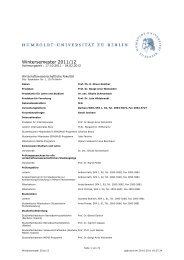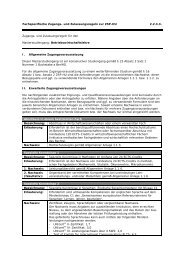Measuring the Effects of a Shock to Monetary Policy - Humboldt ...
Measuring the Effects of a Shock to Monetary Policy - Humboldt ...
Measuring the Effects of a Shock to Monetary Policy - Humboldt ...
You also want an ePaper? Increase the reach of your titles
YUMPU automatically turns print PDFs into web optimized ePapers that Google loves.
10 Bayesian FAVARs with Agnostic Identification<br />
standard au<strong>to</strong>regression approach, but only for <strong>the</strong> real variables except employment. A<br />
lot <strong>of</strong> good research has revealed advances <strong>to</strong> <strong>the</strong>se models, in particular w.r.t. <strong>the</strong> esti-<br />
mation procedure that allows for large datasets, in length and dimension, so that it can<br />
be applied <strong>to</strong> <strong>the</strong> economic question at hand. Hence one can overcome <strong>the</strong> dimensionality<br />
problem faced w.r.t. <strong>the</strong> large datasets <strong>to</strong> be included. The advantage <strong>of</strong> fac<strong>to</strong>r models<br />
is that <strong>the</strong> main driving forces in a large set <strong>of</strong> cross-sectional data, which in our case is<br />
required <strong>to</strong> consider, can be represented by a much smaller number <strong>of</strong> ”fac<strong>to</strong>rs” extracted<br />
from <strong>the</strong> dataset. For our analysis I decide <strong>to</strong> apply <strong>the</strong> so-called FAVAR 10 methodology<br />
which was introduced in Bernanke and Boivin (2003), advanced in Bernanke, Boivin and<br />
Eliasz (2005). S<strong>to</strong>ck and Watson (2005) added some variations <strong>to</strong> it, and provide a broad<br />
survey on its different approaches. These models exploit <strong>the</strong> advances <strong>of</strong> dynamic fac<strong>to</strong>r<br />
models and combine <strong>the</strong>m with <strong>the</strong> VAR methodology. And <strong>the</strong> crucial innovation is <strong>to</strong><br />
combine <strong>the</strong> Bayesian FAVAR with an Agnostic identification.<br />
The question <strong>of</strong> identification is an issue that has been covered a huge body <strong>of</strong> lit-<br />
erature and applied <strong>to</strong> SVAR. The most prevalent schemes are <strong>the</strong> Recursive Cholesky<br />
identification, <strong>the</strong> Long-run Identification, <strong>the</strong> combination <strong>of</strong> <strong>the</strong> two (Zero restrictions;<br />
Leeper, Sims and Zha [1996]) and <strong>the</strong> Agnostic Identification introduced by Uhlig [2005].<br />
In his paper Uhlig also seeks <strong>to</strong> measure <strong>the</strong> effects <strong>of</strong> a shock <strong>to</strong> monetary policy, strictly<br />
speaking <strong>to</strong> a ”contractionary” monetary policy shock, in particular he focuses on <strong>the</strong><br />
effects on Output and finds out that <strong>the</strong>re is no clear effect on output, and that <strong>the</strong><br />
neutrality <strong>of</strong> monetary policy shocks are not inconsistent with <strong>the</strong> data. But what is so<br />
crucial about <strong>the</strong> paper by Uhlig is <strong>the</strong> new more sophisticated identification scheme he<br />
introduces, namely <strong>the</strong> ”agnostic identification” 11 which imposes for a certain period <strong>of</strong><br />
time sign-restrictions on <strong>the</strong> impulse responses, that are consistent with <strong>the</strong> conventional<br />
wisdom.<br />
10 This terminology comes from Bernanke, Boivin and Eliaz [2005]<br />
11 The term agnostic refers <strong>to</strong> <strong>the</strong> missing restriction on <strong>the</strong> variable <strong>to</strong> be analysed.


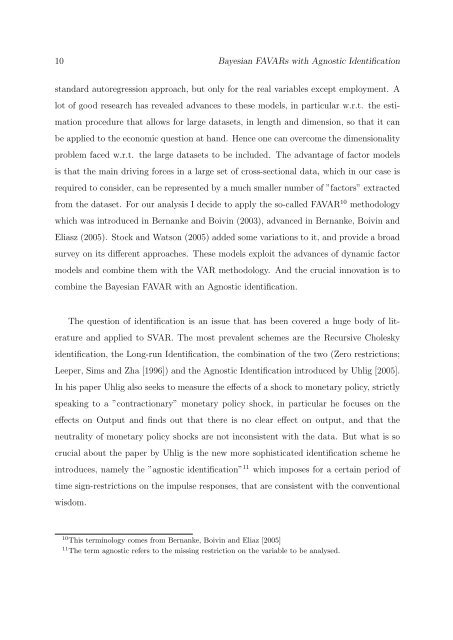
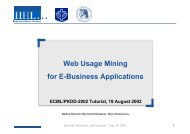
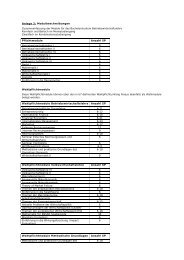
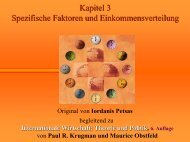
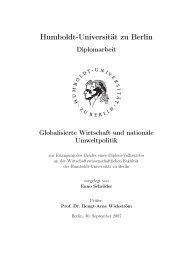
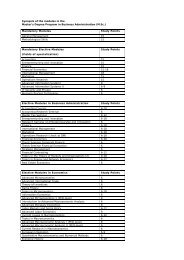
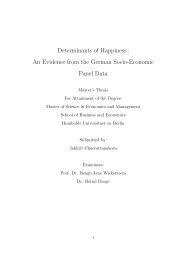
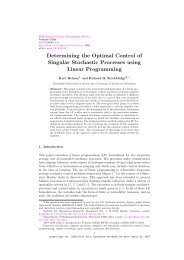
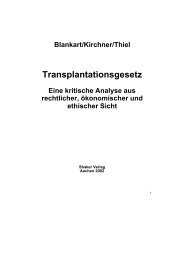
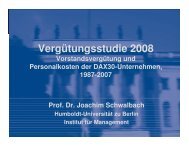

![[Text eingeben] [Text eingeben] Lebenslauf Anna-Maria Schneider](https://img.yumpu.com/16300391/1/184x260/text-eingeben-text-eingeben-lebenslauf-anna-maria-schneider.jpg?quality=85)

